Screen Time: Will iOS 12 really limit our phone obsession?
Ashley Nash checks her phone use on the new iOS 12 feature Screen Time.
Let’s face reality. You are on your phone for hours every day, but do you know exactly how many hours?
On September 17, Apple released IOS 12, which is a software update that is available to download on newer Apple devices. This update includes a new feature called Screen Time. Screen Time tracks the time a person is actively using the device and offers three controls for limiting that active time.
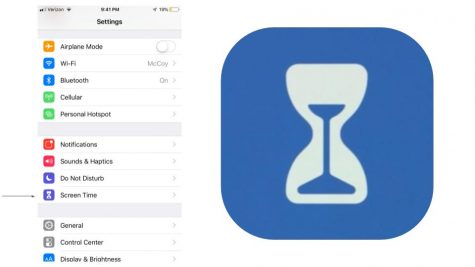
There are a couple of different aspects to this new iOS 12 including App limits, downtime, and parental controls.
This is an amazing tool, but how many will really take advantage?
To turn on Screen Time, on the iPhone or iPad, go to Settings. Then click Screen Time with the purple hourglass logo. If this is your first time using Screen Time, you need to click “Turn On Screen Time.” Then select “This is My [device]” or “This is My Child’s [device].”

Diana Bryan’s Screen Time
App Limits
App Limits can be used for setting daily limits for the time the user can access specific apps. The selected limits refresh every night at midnight. And they can be deleted or modified at any time. This is shocking for most people, as it makes them realize how long they are on their devices.
Sophomore Diana Bryan checked her settings and realized her busiest app is Snapchat. “I never realized that I’m on Snapchat all day long. I probably won’t change my habits, but now I am more aware.” She will have a new level of guilt, but not much more.
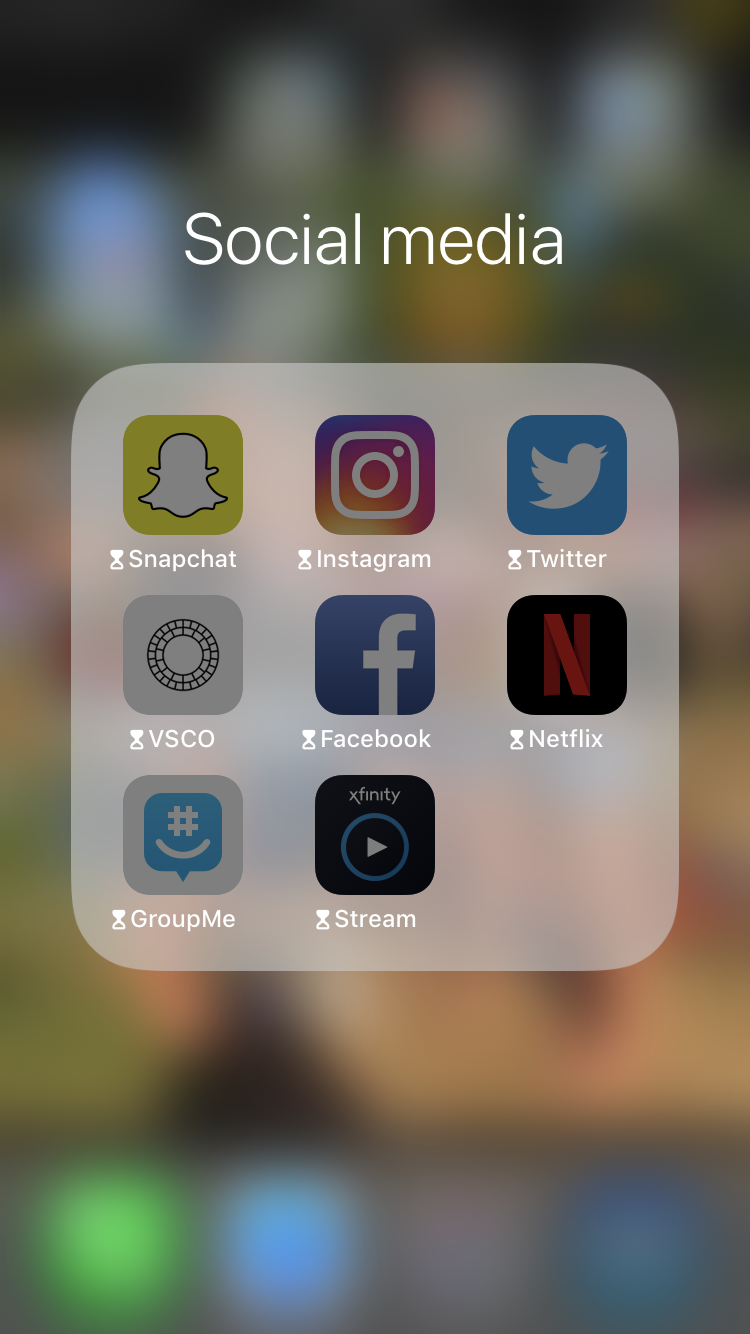
When you are on downtime your apps will look like this.
Downtime
Another feature is Downtime which allows users to schedule a period of time that the user cannot use their phone, with only a few emergency settings available. This forces the user to put down their device. This could be handy at the movies, Thanksgiving dinner or during an exam, but who will do this regularly? Most students go into shock when they have to leave their phones in backpacks during the SAT’s. And phones STILL ring.
Lancer Media surveyed 60 students with the question, “Would you consider limiting your phone use?” More than half said they would not limit their phone use. One responder said, “I think it is a good idea and a useful tool that can help people limit their phone time by opening people’s eyes to how much time they waste on technology alone.”
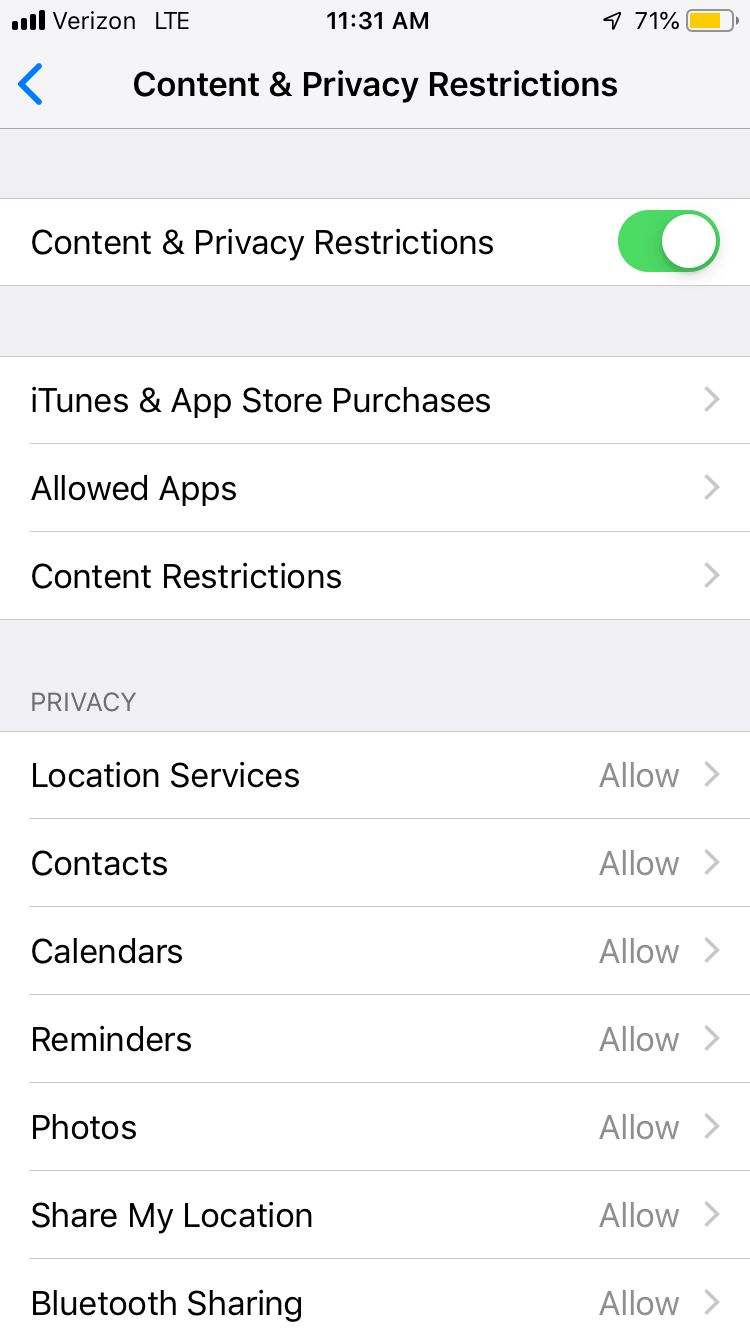
These are some of the parental controls in the iOS update.
Parental Controls
The last new feature is parental controls. This is where parents are able to take control over their child’s device. This feature can be set up using the family sharing controls. The parent can get weekly reports that they can use to regulate how much time is spent in a given app. But parents can also schedule downtime during meals or at bedtime. These different aspects help to make the iOS 12 beneficial for families, giving more parent awareness of the child’s phone habits. It could also guarantee dinner together!
Parent Chris Coccagna said, “I enjoy these parental controls because I can limit screen time, so [my daughter] can spend more time helping me in the garden and also get a reasonable amount of sleep.”
But how many parents will use the app for a teenager?
Screen Time can be beneficial to students because they can set app limits and downtime, to be able to get more done in class. While Linganore has the policy to not use phones at all, people still use their phones–under a desk, in the bathroom, and behind the shield of a computer screen.
US News wrote an article, “Electronics in the Classroom Lead to Lower Test Scores.” The article explains how students who were allowed to have phones and computers in the classroom scored lower on exams. They proved this because they showed the results of a study in the Journal Educational Psychology that revealed, “Students who had cell phones or laptops present while a lesson was being taught scored five percent, or half a letter grade, lower on exams than students who didn’t use have their electronics.”
If we were able to self-regulate and use the new feature to block the use of cell phones in school, students could have a better understanding of course material and might get higher grades. The reality, though, is no one is going to voluntarily set up the blocking controls.
This could feature also benefit students at home, instead of having their faces in their phones.
Sophomore Jaylin Graziano said, “If I realize how long I am on my phone, it will make me more aware that I could be more productive by doing homework or getting more sleep.”
Kudos to Apple for realizing that it’s not okay to always be on the phone. The Screen Time feature is allowing users to take a walk, sleep longer and have family conversations. But it’s up to the user to change. Not so sure we want to change.
Your donation will support the student journalists of Linganore High School. Your contribution will allow us to purchase camera/recording equipment and cover our annual website hosting costs. We hope to raise enough money to re-start a monthly printed issue of our paper.



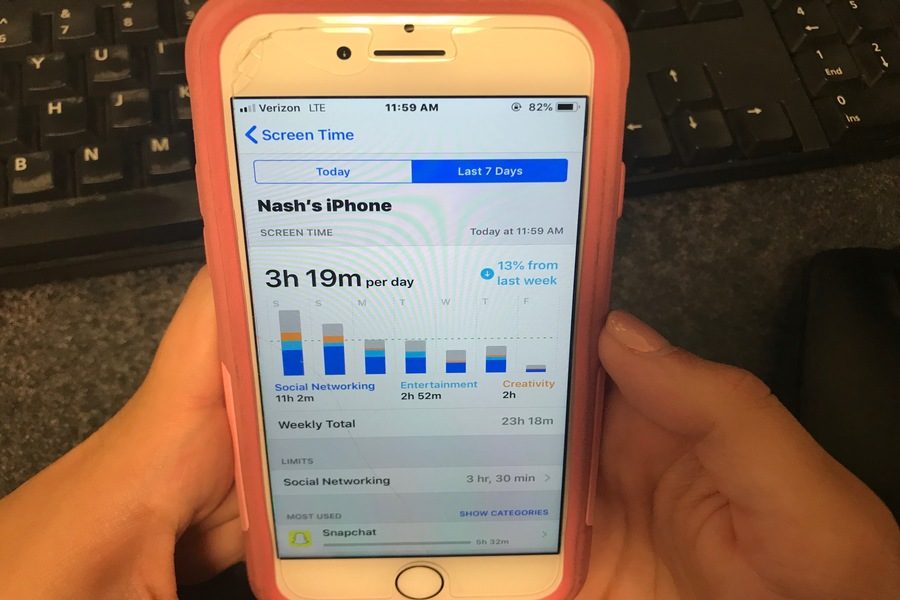

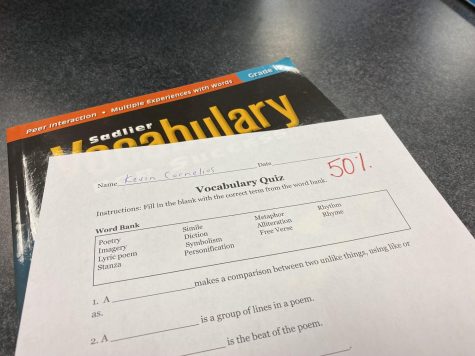





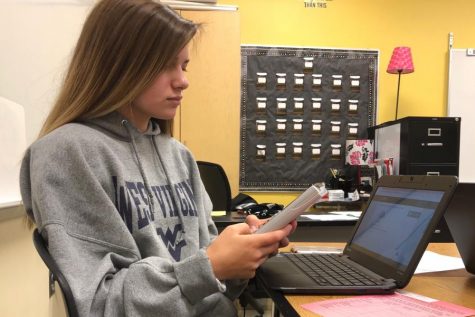


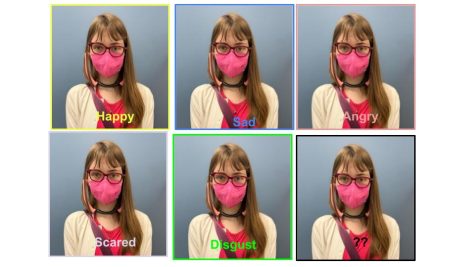





Bella • Oct 19, 2018 at 8:02 am
Wow so interesting
Mrs Parente • Oct 18, 2018 at 8:46 pm
Love the article! Good job Rachel.
jordan best • Oct 17, 2018 at 6:35 pm
This is very interesting, it makes me think about how long i’m really on my phone. Great job rachel!!